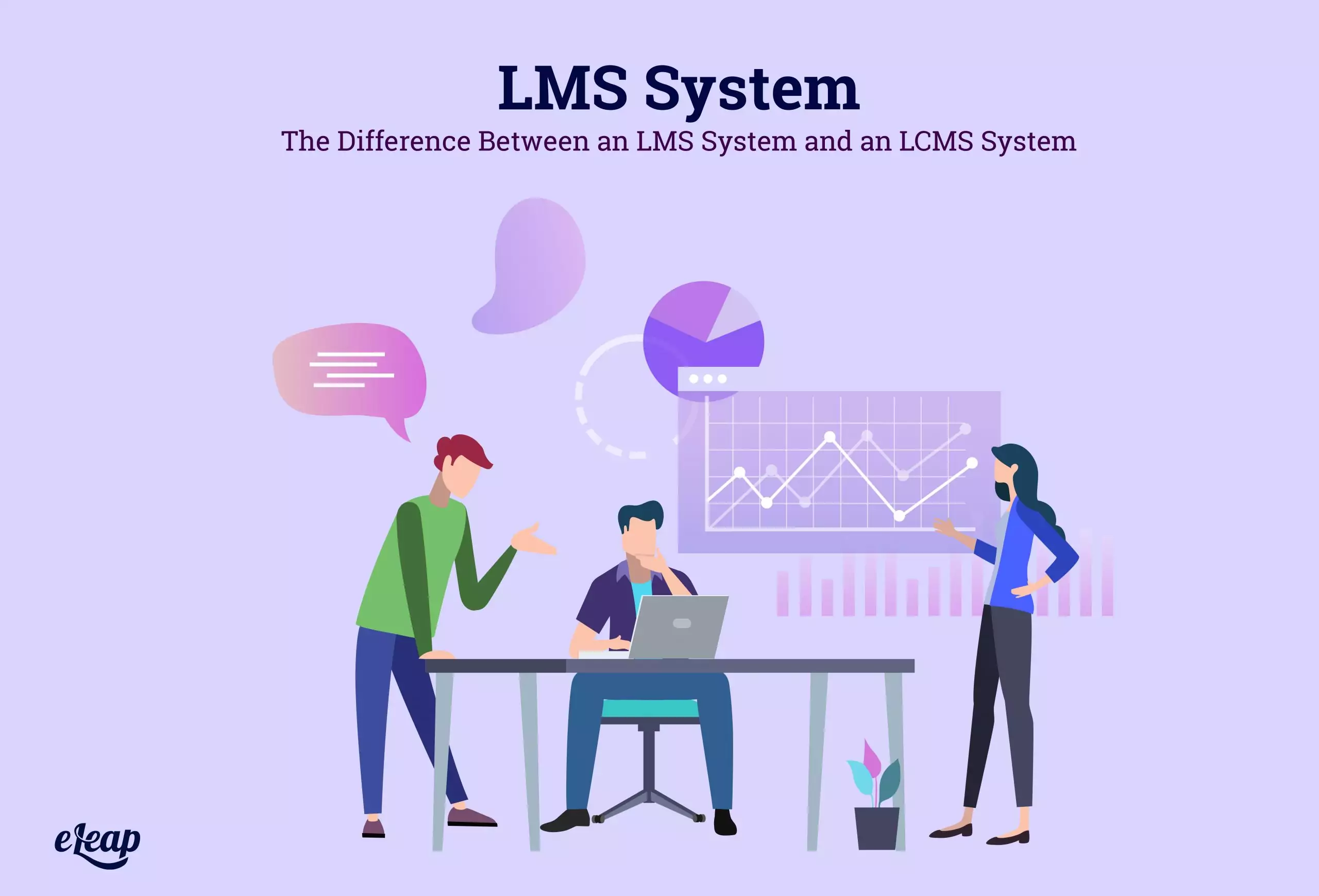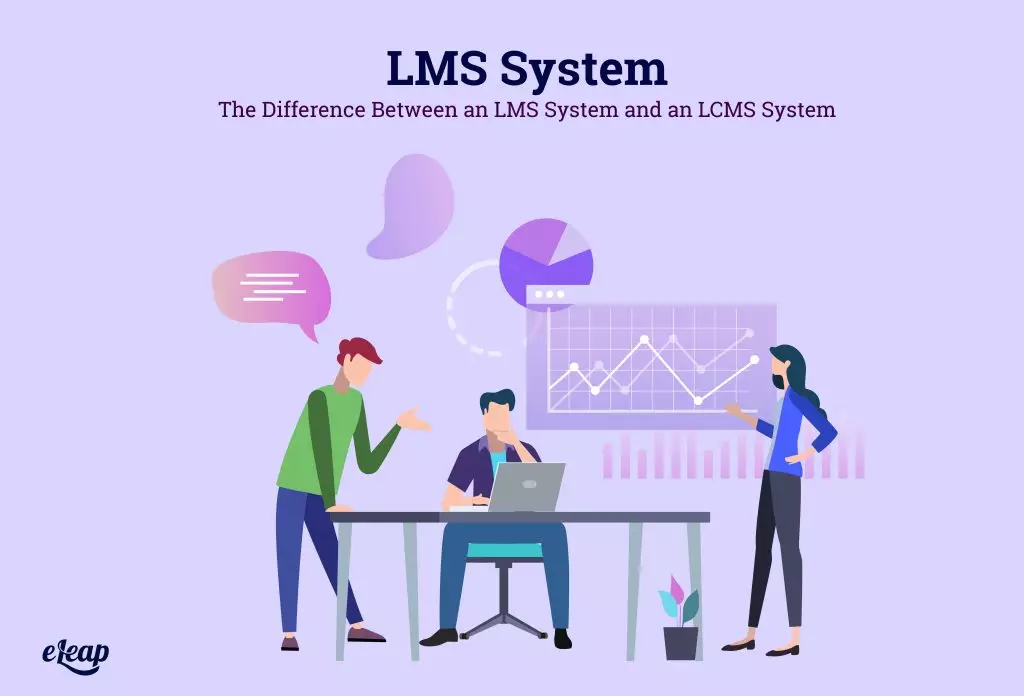LMS System
The Difference Between an LMS System and an LCMS System

Keeping your company up to date with current industry trends is the best way to stay ahead of the competition. Without a keen eye for the most recent developments, your company will soon lag. These days, trends are pushing towards modernization. As technology continues to become a given throughout our personal lives, so too has it begun to affect how we work. By automizing and digitalizing areas of our businesses, we can eliminate inefficiencies and standardize companywide policies.
Employee training is no different. There was a time when workers were expected to sit through seminars, read pamphlets, and attend classes but, if you are sticking to those outdated methods, you are holding your company back. Updating to a digital learning management system (LMS) will benefit employees, their overall learning experience, and company profits. Let’s explore how updating your training process can achieve this.

What is an LMS System?
A learning management system (LMS) is an online platform for delivering training materials to your employees. Lessons can come from pre-existing material or be developed and customized entirely to fit your company’s needs. Using an LMS, employers can simply upload mandated courses for their employees to complete. LMS systems will track and store data on employee progress as they go through the courses.
LMS systems come in a couple of different varieties—on-premise LMS systems and software as a service (SaaS) options. On-premise LMS systems consist of both hardware and software that you purchase from the manufacturer. Once you’ve purchased the equipment and had it set up, you become the owner of the LMS system. An on-premise LMS offers all the benefits of a digital learning management system but is a slightly older and less robust option than a SaaS LMS system.
With a SaaS LMS system, rather than buying hardware and then installing software onto it, you pay a monthly or yearly subscription fee and gain access to a cloud-based platform. This is a cheaper and more accessible option than paying an expensive upfront installation fee for a device that can only be used in one location.
What are the Benefits of an LMS System?
Compared to holding lessons in a brick-and-mortar office, the benefits of an LMS system seem nearly endless. To start, let’s look at how an online LMS system is more accessible, more customizable, and more affordable.
Accessibility of an LMS System
Upgrading your employee training program to an LMS system eliminates the physical restrictions of a standard training seminar. This is particularly true of a quality SaaS LMS system. As long as an employee has a stable Internet connection, they can access training material from anywhere. LMS systems are fully mobile, allowing trainees to view courses on their cell phones, tablets, notebooks, or any other mobile device.
Giving employees access to their training material not only means that they can complete courses from home but that they can also call up the information whenever they need it. Training material no longer has to be relegated to a quarterly conference or a pamphlet. Consider just how much employees can better prepare themselves by having access to their training at the touch of a button.
Customizability of an LMS System
Using an online LMS system, you can implement a broader range of teaching methods than in a classroom. Holding your employees’ attention for the length of a training session can be a difficult task, especially if the course content is dull. With an LMS system, you can add in a selection of multimedia options to keep learners engaged.
A quality LMS course might include a few videos, some interactive visuals, and maybe even a game or two. By presenting trainees with something more fun than just a booklet, they will feel encouraged to engage with the material. Increasing their engagement also increases how much information they retain.
Also, because LMS systems track and record data on how trainees perform throughout their courses, you can modify the lesson materials according to their level. If one employee appears to understand the content already, it will make more sense to offer them an advanced course. Likewise, if another employee seems to be lacking prior knowledge, providing a course to fill in their gaps in knowledge could bring them up to speed.
Affordability
As a business, the major concern is profitability. Perhaps you are wondering whether a systemwide update is really worth it? Let us put your mind at ease. If your company is still using the old training methods, you know that it can be a hassle getting every employee to gather for a training session. This takes time out of their days that they could spend working. This directly affects your billable hours.
On top of lost work hours, you also have to pay trained instructors to conduct the seminars, print off course materials, and pay for training sessions to be developed. With each one of those costs taken into account, training across an entire company can become incredibly expensive. With an LMS system, all of those costs are eliminated. Simply pay a subscription fee, and every employee will have access to training on their own time rather than on yours. No more paying to print out booklets nor corralling workers into conference rooms!
Conclusion
Upgrading to an LMS system will improve your company’s entire training program. Your employees will find it more accessible and engaging, and you, as an employer, will find it far more compatible with your budget. You will see an overall improvement in your workers’ productivity and company knowledge, which will translate into better sales and a higher standard of employee satisfaction.
Don’t let your company’s training program fall into the past. Investing in a modern LMS training system will bring your company into the future. A company is only as brilliant as its parts. Improving your workers’ knowledge is the same as growing your business.
Free Resources – Additional information?